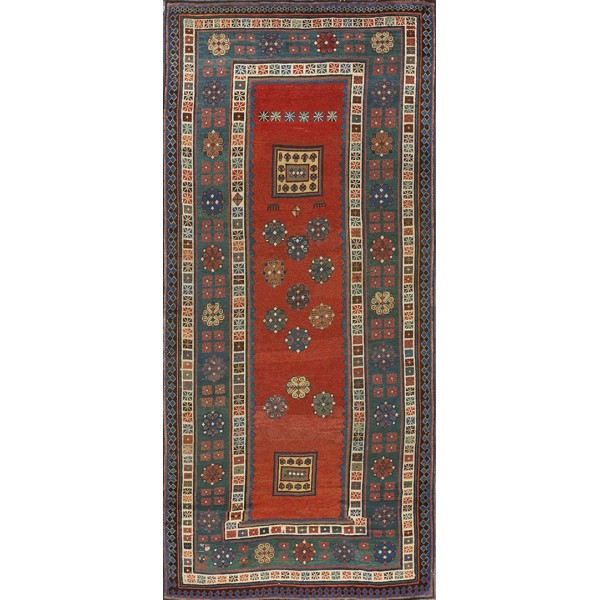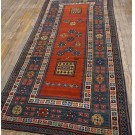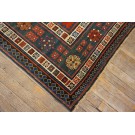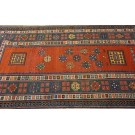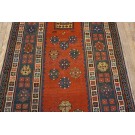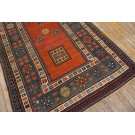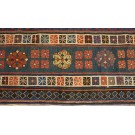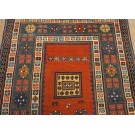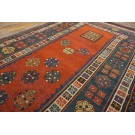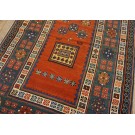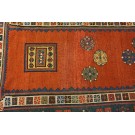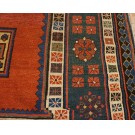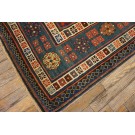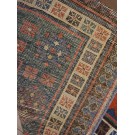19th Century Caucasian Talish Carpet
| Stock ID: | #21082 |
| General Rug Type: | Caucasian |
| Specific Rug Type: | Kazak |
| Circa: | 1860 |
| Ground Color: | Red |
| Border Color: | Green |
| Origin: | Russia |
| Material: | Wool |
| Weave: | Pile - Knotted |
| Shape: | Rectangle |
| Width: | 4' ( 122 cm ) |
| Length: | 8' 8" ( 264 cm ) |
DescriptionCaucasianThis is the general heading for all rugs made in the Caucasus mountains and in the trans-Caucasus areas, north of the Arax River, and between the Black and Caspian Seas. This includes rugs from the Kazak, Karabagh, Gendje, Koghan, Talish, Akstafa, Shirvan, Baku, Kuba and hesghi districts and the variants and subtypes thereof. The rugs are usually in scatter sizes and of all wool construction, with bold colors and geometric patterns, from the 18th through 20th centuries. Prices range widely depending on rarity, color, design and condition. A strong collector market exists for the better examples. KazakThe thickly piled, boldy colored strongly geometric Caucasian rugs woven by villages in the Kars (Turkey) Tiflis (Georgia) Erivan (Armenia) triangle. Both prayer and non-directional formats abound and there are numerous subtypes depending on the town of origin as well as pattern similarities. Always popular with both collectors and decorators, the best examples were woven between 1840 and 1900 and rare exceed 6 x 10 in size. These are the most recognizable and paradigmatic of all Caucasian rugs, perennially popular in both Europe and America. | |
| Tearsheet Download | |
